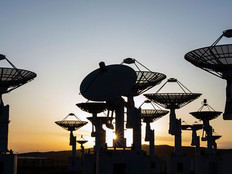What Devices are Enhancing Informed Delivery?
In recent years, the United States Postal Service deployed about 280,000 Zebra TC77 touch computer devices to replace an end-of-life device that mail carriers used to scan packages once they’re delivered. In 2019, USPS distributed 75,000 of the handheld devices, with the remainder sent in 2020.
The new devices provided increased processing power that would support 4G network connectivity, says Amit Cholkar, USPS senior director of technology development. Scanned information from the devices is relayed via a cellular connection to the Postal Service’s internal tracking system, providing nearly real-time package status information to customers.
Choosing hardware that doesn’t need to be custom-built or excessively configured on the back end can reduce some of the delays involved in device deployment, according to Steve Wright, USPS manager of automation equipment.
DIVE DEEPER: How to keep mobile technologies safe with adaptive protection and device control.
“You’re cutting out a ton of design effort,” he says. “If you’re coming in with a set of requirements for a supplier to build you something more or less from scratch and that’s specialized in terms of hardware, that’s going to take many months — maybe even years, depending on how complex it is. Any system where you can grab something that’s already made is going to save significant time.”
The Android operating system used by Zebra devices helped employees, who had experience with the system’s touchscreen and other basic user interface aspects, quickly adjust to using the scanners, Wright says.
“Whenever you have a device that’s more or less familiar to some folks — an Android phone, for example — it’s going to be helpful,” he says. “So, even though the device itself requires special training on things like how to press buttons and turn them off, that’s picked up pretty quickly because it’s very similar to things that are out in the field today.”











